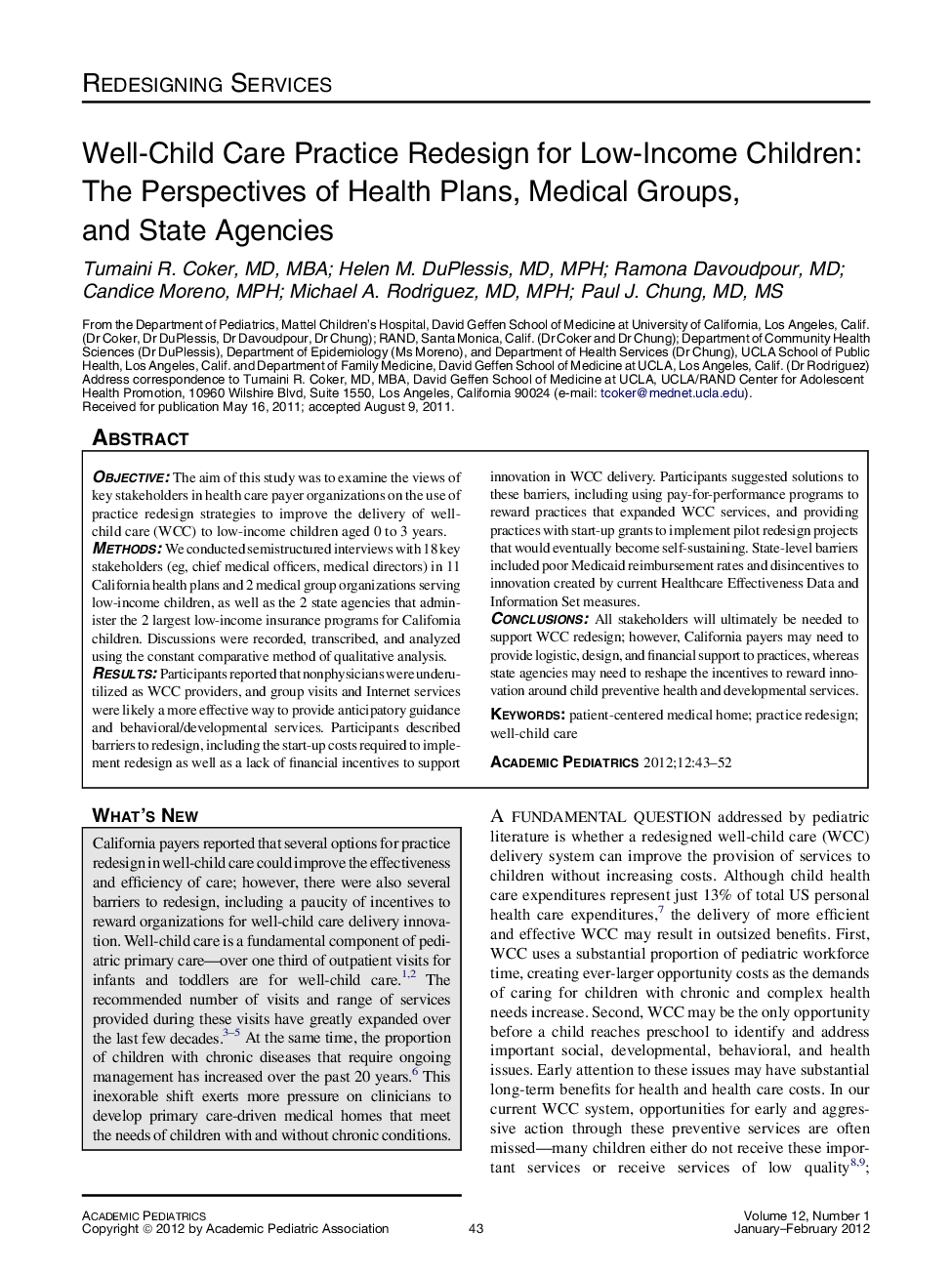| Article ID | Journal | Published Year | Pages | File Type |
|---|---|---|---|---|
| 4139417 | Academic Pediatrics | 2012 | 10 Pages |
ObjectiveThe aim of this study was to examine the views of key stakeholders in health care payer organizations on the use of practice redesign strategies to improve the delivery of well-child care (WCC) to low-income children aged 0 to 3 years.MethodsWe conducted semistructured interviews with 18 key stakeholders (eg, chief medical officers, medical directors) in 11 California health plans and 2 medical group organizations serving low-income children, as well as the 2 state agencies that administer the 2 largest low-income insurance programs for California children. Discussions were recorded, transcribed, and analyzed using the constant comparative method of qualitative analysis.ResultsParticipants reported that nonphysicians were underutilized as WCC providers, and group visits and Internet services were likely a more effective way to provide anticipatory guidance and behavioral/developmental services. Participants described barriers to redesign, including the start-up costs required to implement redesign as well as a lack of financial incentives to support innovation in WCC delivery. Participants suggested solutions to these barriers, including using pay-for-performance programs to reward practices that expanded WCC services, and providing practices with start-up grants to implement pilot redesign projects that would eventually become self-sustaining. State-level barriers included poor Medicaid reimbursement rates and disincentives to innovation created by current Healthcare Effectiveness Data and Information Set measures.ConclusionsAll stakeholders will ultimately be needed to support WCC redesign; however, California payers may need to provide logistic, design, and financial support to practices, whereas state agencies may need to reshape the incentives to reward innovation around child preventive health and developmental services.
